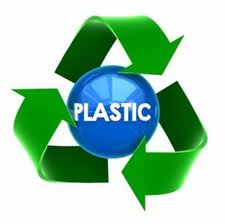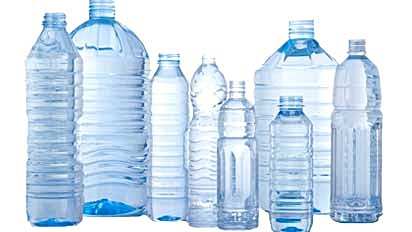Classification and classification of plastic industry

Plastic products will use the main raw material, namely various types of plastic beads, according to the needs of customers. Some factories will improve the raw materials themselves, such as adding colors or adding other chemicals. After that, it is mixed and then melted to prepare to be processed into various molding processes such as Injection, Injection, Extrusion, Blow, etc. After the forming process, Plastic workpieces will become stiff when lowering temperatures. Therefore, there is cooling of the workpiece. After that, it is a step in finishing the work, such as cutting, spraying, polishing or coating, printing, etc. It is considered the end of forming plastic products.
The plastic industry of Thailand has organized the group of plastic product forming industry. By considering divided by production process and type of plastic products according to this table
Blow Molding
Blow molding is the blowing of plastic bottles. Which starts with the raw material is Plastic pellets of HDPE, PP, PE, etc. Plastic pellets are melted into the Extruder by using heat from an electric heater, then screws are compressed into liquid plastic. By using the principle of screw driving and closing-opening the mold with the Hydraulics system, the die head is sent out into a cylindrical style (Parison). Then the mold moves up and blows the air. By using compressed air In order to make the plastic material expand according to the Mold. When full Mold, there will be chilled water from the Chiller machine to cool the mold so that the work piece will stabilize according to the mold as shown.
Products from Blow Molding include packaging bottles of the type Engine oil bottle, oil gallon, shampoo bottle etc.
Stretch Blow Molding
Is the same process for producing packaging bottles Which this molding will increase the strength of the plastic container Because there is a certain average thickness Reduce production costs Because there is little waste and still get a seamless seam at the neck and bottom of the container Therefore resulting in higher quality Blow Molding, in which Stretch Blow Molding is divided into 2 parts: Pre-Form injection and then Pre-Form goes into Stretch Blow process to Forming according to the next mold
Injection (Injection Molding) is used to drive the screw and close – open Mold with Hydraulics or use an electric motor. Beginning with the raw material of plastic Most of them are PET, then melt into the Extruder by using heat from an electric heater. The screws are then extruded through the nozzle through the runner into the mold. (Most Pre-Form production uses Hot Runner to reduce the amount. Waste) When the plastic material is fully filled in, Mold will have cold water from Chiller to flow through Mold to cool the work and freeze then Mold will open to remove the work piece.
Stretch Blow is a blow molding bottle using raw material, Pre-Form from injection, preheated to soften the Pre-Form, then Mold will come together, then a steel bar press the bottom of the Pre-Form to stretch down. Vertically and blow to fully expand the mold Then there will be cold water flowing through the Mold so that the bottle will solidify and open the Mold. Release the bottle and finish. Details as in the picture
Products from Stretch Blow Molding.Most of the products are packaging bottles for drinking water, fruit juice, wide mouth jars, drinking water tanks, seasoning sauce bottles, vegetable oil bottles, etc.
Injection molding
Injection molding Can start from the raw material into plastic granules or powder into the original cone Will be threaded by the worm to the front of the cylinder Which has an electrical heater causing the plastic to melt After that, the worm will move the plastic to push through the nozzle into the mold, which is closed. The mold will be cooled by cold water produced by a chiller to cool and harden the workpiece. Can be removed from the design for a short time Then will send to decorate the next work as shown
Injection Molding products. Injection molding products come in a variety of forms, such as electronic parts, automobile parts, electrical appliances, household goods, children’s toys, etc.
Rotational Molding
Molding of plastic products by rotating method Suitable for producing large hollow workpieces Will get the work piece without stress Surface finish Low production period And has a dense density The working principle of this molding consists of 4 steps as follows
1. The loading of raw materials (mostly raw materials) is thermoplastic plastics. May have a liquid appearance Or as a powder Put it into the hollow mold After that, cover the mold with the lid.
2. Molding or curing Move the mold into the heating room. In order to rotate the two axes while also heating to make liquid plastic And spread along the surface of the mold thoroughly With gravity (not centrifugal force)
3. Cooling: Move to a cold room where cold air may be used. Or cold water sprayed into the mold But the mold must still be rotated To reduce the shrinkage of the workpiece during cooling
4. Removing the work (unloading), then when the work hard and maintain its shape Can open the mold In order to remove the workpiece
Rotational Molding molding products, large water tanks, industrial tanks, showers, trash cans, whole dinghy, amusement park children’s toys, etc.
Compressed Molding
Is a molding by bringing the hardened plastic powder to compress in the mold under the right pressure and temperature Most of the raw materials used in this process are Melamine powder. The production process is made by Beginning with bringing plastic powder to weigh to the desired weight. After that, it will be dried in a humidifier and the material will be heated before entering the mold. Then put in the mold Once started to close the mold, make the plastic.



